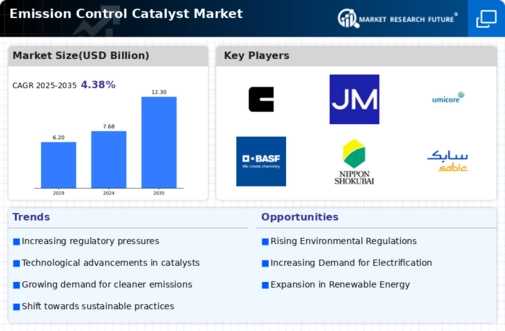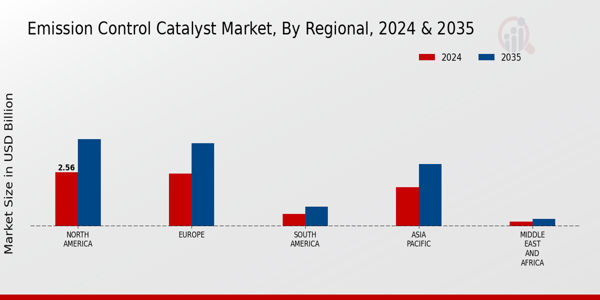The Emission Control Catalyst Market is a dynamic sector characterized by increasing regulations and stringent emission norms across various industries, notably in automotive and industrial applications. With the growing emphasis on environmental preservation and sustainability, the market is seeing innovative approaches to reduce harmful pollutants through advanced catalytic technologies.
The competitive landscape is shaped by key players who are continuously enhancing their product offerings through research and development, strategic collaborations, and mergers and acquisitions.
This sector is heavily influenced by technological advancements and changing regulations, leading to a diverse range of products tailored to meet specific emission standards on a global scale.
As the demand for cleaner air and reduced emissions continues to escalate, the competition within this market intensifies, driving companies to adopt innovative solutions and strategic positioning to capture significant market shares.
Clariant is a notable player within the Emission Control Catalyst Market, recognized for its expertise in chemical manufacturing and innovation. The company has established a strong market presence by focusing on sustainable solutions that align with global emission reduction objectives.
Clariant’s strengths lie in its advanced research and development capabilities that enable the delivery of high-performance catalyst technologies aimed at minimizing emissions in various applications.
Their commitment to sustainability and environmental stewardship has positioned them as a preferred choice for clients seeking efficient emission control solutions.
Furthermore, Clariant's strategic partnerships and collaborations with other industry leaders enhance its ability to innovate and adapt to changing regulatory landscapes, reaffirming its competitive edge in the emission control catalyst segment.
Johnson Matthey stands out in the Emission Control Catalyst Market with its robust portfolio of catalysts and technologies aimed at reducing automotive and industrial emissions. The company offers a wide range of key products and services designed to meet stringent environmental regulations worldwide.
With a strong global presence, Johnson Matthey leverages its extensive expertise and technological advancements in catalysis to provide innovative solutions that facilitate cleaner operations.
The company has been active in mergers and acquisitions, expanding its capabilities and market reach, thus allowing it to strengthen its product offering and meet increasing customer demands.
Johnson Matthey's dedicated focus on research and sustainability ensures that it remains at the forefront of the emission control catalyst market, effectively positioning itself as a leader committed to advancing both client objectives and environmental standards on a global scale.

















